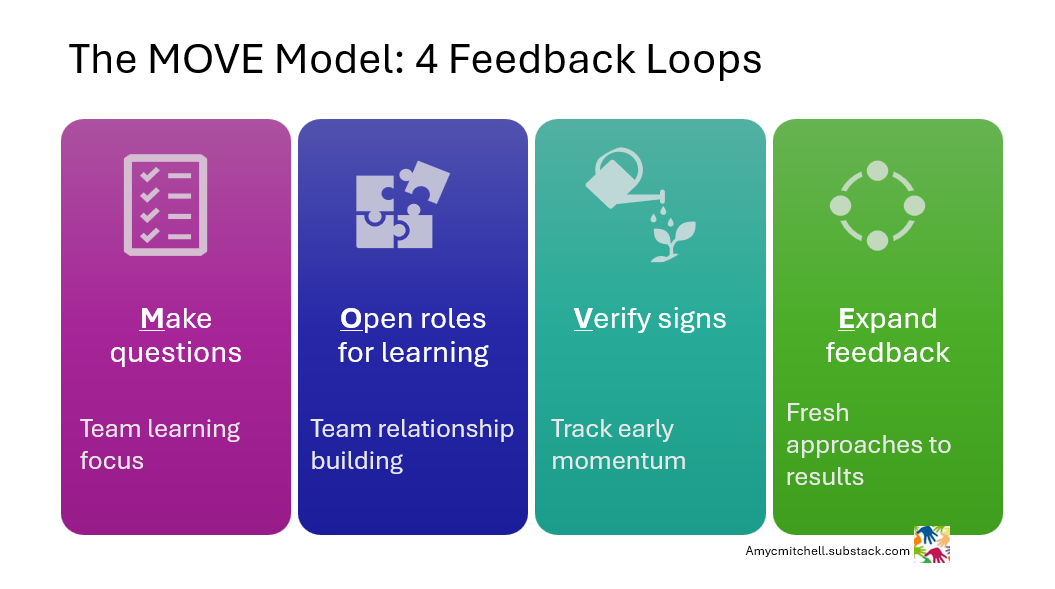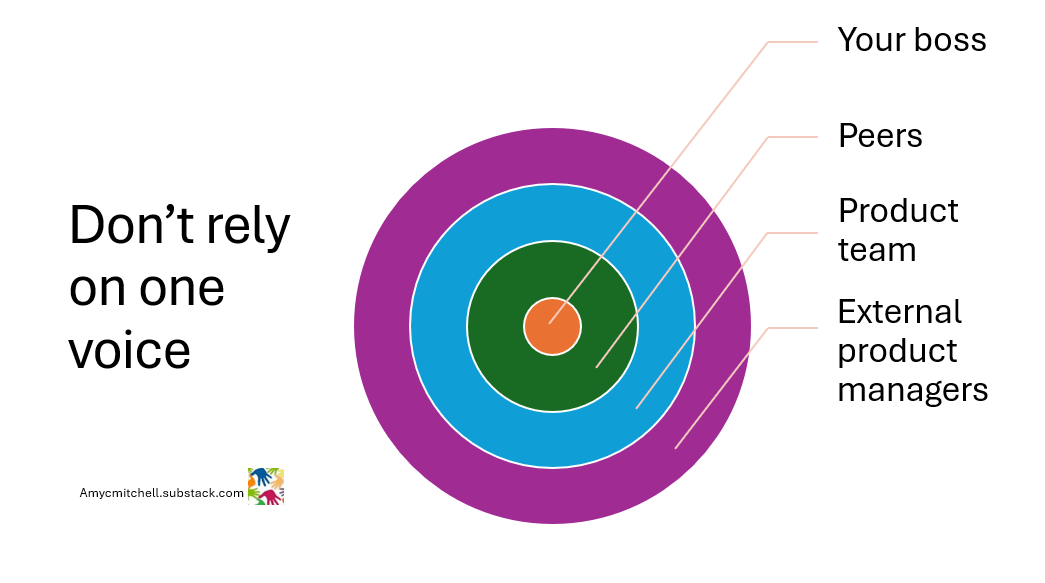Keeping Yourself Moving as a Product Manager
4 tactics for making progress visible — to yourself and your team
Tom finished the week on a product manager high note. He and his boss had just won executive support for a new pricing tier. The bet looked golden: pent-up customer demand, no engineering lift, and a proven licensing system already in place.
But when Tom shared the news with his product team, the response was… silence.
Why? Because the team was waiting for Tom to turn that big idea into direction. His point of view alone wasn’t enough. There were dozens of ways a pricing tier could be added at his company—and nobody knew which path to follow.
Tom couldn’t afford to wait for clarity to magically appear. He had to lead through the unknown.
That moment when you feel the silence after a big win is familiar to every product manager. And it’s where self-doubt creeps in. Which direction is right? What if a different way is better?
The problem isn’t you. It’s that product management rarely provides quick, external signals of progress. Feedback is slow. Validation is scarce. And yet, the work has to keep moving.
This is where the MOVE Model comes in. The MOVE Model is a way to create your own signals when the usual ones aren’t there:
Make questions to lead the team to answers
Open roles to learn the perspectives that trip you up
Verify signs of progress early, before launch
Expand feedback so you’re not dependent on one voice
Each loop gives you traction when the path is murky. Together, they keep you moving.
Loop 1: Make Questions - Write Your Own Questions (and Answers)
If you’re stuck, the questions you wish someone would ask are often the exact ones that show your knowledge gaps. Writing them down forces clarity. And creates your own version of a design review for product thinking.
Actions:
List the critical questions for your initiative (e.g. “Why this bet now?”).
Use AI to refine one question enough to discuss with a subject matter expert.
Share 2–3 focused questions with the SME ahead of time. They’ll often come prepared with answers.
Chip away a little at a time while still moving the initiative forward.
Why it matters:
Writing your questions gets you focused on learning from others, which is more effective than asking for help. After a few rounds, you can look back at your early questions and see how far you have come.
Example:
List out customer questions, use AI to examine how others added a pricing tier, then bring a question to a salesperson. Each round of Q&A helps Tom narrow down the options.
Loop 2: Open Roles - Learn the Roles That Surprise You Most
Surprises = doubts. If you don’t understand how another function thinks, you’ll constantly feel blindsided.
Actions:
Pick one role that tripped you up recently.
Ask them how your current milestone impacts their work.
Apply what you learn to refine requirements or risks.
Why it matters:
Empathy for product team members builds productive relationships. The value of learning from your product team goes way beyond reading and AI tools.
Example:
Support teams often surface issues right before release. A quick conversation about what a pricing tier means to them (training? docs? timing?) can eliminate last-minute fire drills. Tom learns the target customers don't use many features and will want the lower-featured tier.
Loop 3: Verify Signs - Predict Small Signs of Growth
Don’t wait months for launch results. Define early signals that tell you whether you’re heading in the right direction.
Action:
Map the people critical to your outcome.
Ask what’s new for them.
Share context early so they’re not surprised.
Track small signs of support or adoption.
Why it matters:
It is gratifying to see the small signs of success as you go. Change starts slowly before picking up momentum.
Example:
When introducing a product change, early signals might be sales asking questions, or marketing previewing content on it. Tom gets questions about what is inside the new pricing tier and which customers would want it. Tom adds this to the GTM strategy for a readout to senior leaders.
Loop 4: Expand Feedback - Diversify Your Feedback Sources
Your boss isn’t your only signal of progress. Relying too heavily on one person slows you down.
Action:
Talk to other product managers.
Share drafts in public folders for comments.
Watch how peers in and outside of your organization handle similar bets.
Why it matters:
You can get ideas and feedback from others in related situations. Looking at how someone else solved a similar situation brings fresh ways to get results.
Example:
Tom reviews the pricing tier and features with product managers and marketing. He gets feedback from similar product changes. Sales ops raises compensation issues with some of the options. Tom is now clear on the right way to add the pricing tier.
Connecting the Dots
Each loop is small on its own. But together, they compound into momentum. You learn faster, adjust faster, and prove progress before anyone else has validated it for you.
That’s how growth actually happens: not one big moment of “yes,” but dozens of tiny signals.
When you create your own signals, you replace silence with movement. And that momentum reassures your team, engages your stakeholders, and shows the business your bets are worth backing.
That’s the real work of product management—not waiting for validation, but building it as you go.
Progress in product management isn’t found. It’s created—one signal at a time.
Adding a pricing tier to your product
Tips for being a strategic product manager
Looking for more practical tips to improve your product management skills?
Become a paid subscriber and get more weekly tips. Last week’s article: Connecting Your Roadmap to Orders
TLDR Product listed Product Management IRL articles recently! This biweekly email provides a consolidated list of recent product management articles.
Connect with Amy on LinkedIn, Threads, Instagram, and Bluesky for product management insights daily.







